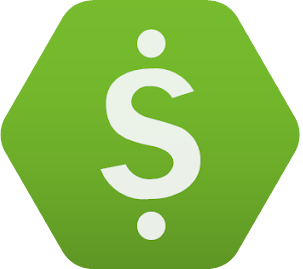What is cloud cost management and why is it so important?
The cloud is today one of the most expensive resources for any modern organization, second only to employee salaries and overhead. According to recent research by Gartner, end-user spending on public cloud services will reach $396 billion in 2021 and grow 21.7% to reach $482 billion in 2022. By 2026, Gartner predicts public cloud spending will exceed 45% of all enterprise IT spending, up from less than 17% in 2021.
But keeping cloud costs under control is hard. Cloud assets are fragmented across multiple teams, cloud vendors, and containerized and non-containerized environments. Cloud spend is vulnerable to large fluctuations, making it difficult to forecast and keep under control.
That’s why, according to Flexera’s 2020 State of the Cloud Report, optimizing the existing use of the cloud for cost savings is the top priority for 73% of cloud decision-makers. The report came on the back of news that the average company wastes 35% of its cloud computing budget, which translates into $10 billion in wasted public cloud spend.
In an even bolder statement, Gartner analysts estimate that as much as 70% of cloud costs are wasted. These stats make it easy to see why cloud cost management and optimization are a growing priority for engineering, operations, and FinOps teams.
In this article:
- What is cloud cost management?
- What are cloud cost management tools?
- 6 notable cloud cost management tools
- Cloud cost management and optimization best practices
- Cloud optimization with FinOps
- Why MSPs use cloud cost management tools?
- Anodot for cloud costs management
What are cloud cost management tools?
With the growing complexity of cloud environments, it is not feasible to manage costs without automated tools. Cloud cost management tools help organizations monitor, analyze, and optimize their cloud expenditures. They provide insights into cloud usage and spending, typically through features such as cost tracking and analysis. These tools often include dashboards and reports that highlight trends, anomalies, and areas with cost saving potential.
Cloud cost management tools also offer optimization suggestions. These may involve recommendations for rightsizing resources, eliminating idle instances, or switching to more cost-effective pricing plans. Advanced tools use machine learning and analytics to provide more sophisticated optimization strategies.
Many of these tools support automated actions, including the shutdown of unused resources, applying cost-saving policies, or managing reserved instances. Security and compliance features are also common, helping organizations ensure that their cloud environment adheres to best practices and regulatory requirements.
6 notable cloud cost management tools
1. Anodot
Key features include:
- Complete, end-to-end visibility into your entire cloud infrastructure and related billing costs. By monitoring your cloud metrics together with your revenue and business metrics, Anodot enables cloud teams to understand the true cost of their SaaS customers and features.
- Automatically learns service usage patterns and alerts relevant teams to irregular cloud spend and usage anomalies, providing the full context of what is happening for the fastest time to resolution.
- Includes proprietary ML-based algorithms to offer deep root-cause analysis and recommended remediation.
- Continuous monitoring and deep visibility to align FinOps, DevOps, and Finance teams and cut your cloud bill.
- Granular insights about Kubernetes deployments that no other cloud optimization platform offers. Easily track your spending and usage across your clusters with detailed reports and dashboards.
- Multi-dimensional filters that let you deep dive into your performance and identify under-utilization at the node level.
- AI-powered forecasting leverages deep learning to automatically optimize cloud cost forecasts, enabling businesses to anticipate changing conditions and usage and get a better read on related costs.

Try Anodot for Cloud Costs with a 30-day free trial. Instantly get an overview of your cloud usage, costs, and expected annual savings.
2. Apptio Cloudability

Apptio Cloudability offers a solution for optimizing cloud expenses by assisting collaboration among IT, finance, and DevOps teams. It provides tools to manage cloud resources, aligning costs with business objectives.
Key features include:
- Cost tracking and analysis: Helps allocate every aspect of cloud spending, including costs related to containers and ancillary services. Ensures precise tracking of expenditures to the benefiting business unit, project, or service.
- Optimization suggestions: Uses analytics to identify rightsizing opportunities across cloud providers, helping firms cut costs and reallocate resources.
- Strategic financial management: Aligns cloud expenditures with business value, promoting budget ownership among teams.
- Automated cost savings: Aids in identifying and implementing the most advantageous saving plans and purchase reservations, automating cost reductions while upholding service levels.
3. CloudBolt

CloudBolt helps organizations simplify cloud operations while maintaining agility. The platform focuses on FinOps to balance developer flexibility with financial control in cloud environments.
Key features include:
- Financial traceability: Simplifies and normalizes financial data for comprehensive cost tracking and detailed allocations, linking expenses directly to business actions to improve financial oversight.
- Guardrails and financial workflows: Supports financial governance with proactive controls that help maintain budget compliance and prevent excessive spending.
- Assisted intelligence: Provides insights that inform decision-making, improving cloud resource performance and cost efficiency.
- Unified cloud management: Enables centralized management of various cloud environments, offering a consolidated view of all cloud-related operations.
4. AWS Billing and Cost Management

AWS Billing and Cost Management provides a set of tools to help users manage their cloud expenses efficiently. It enables detailed cost tracking, invoice management, and financial planning, ensuring administrators can monitor and optimize AWS spending.
Key features include:
- Billing and payments: Helps understand monthly charges, manage invoices, and set up multiple payment methods.
- Cost analysis: AWS Cost Explorer can be used for visual cost analysis, forecasting, and custom report generation. It can send alerts for cost anomalies and export detailed data for in-depth analysis.
- Cost organization: Costs can be organized by teams, applications, or environments using cost categories and cost allocation tags.
- Budgeting and planning: Users can create and manage budgets, set custom cost thresholds, and receive alerts when spending exceeds limits.
5. Azure Management

Azure Cost Management provides a set of tools to help organizations maximize the efficiency of their cloud investments. It offers visibility, accountability, and cost optimization, ensuring that business units can manage and reduce their cloud expenses.
Key features include:
- Continuous monitoring and reporting: Always-on monitoring with detailed reports available directly from the Azure portal, with data latency of up to 8 hours.
- Tailored recommendations: Azure Advisor provides customized suggestions for cost optimization, including reservations, rightsizing, and eliminating idle resources.
- Customization capabilities: Uses Microsoft Power BI connectors and Cost Management APIs for personalized reporting and analysis.
- AI-powered insights: Provides detailed cost insights, forecasting, and reports, along with guidance for managing and optimizing cloud investments.
6. Google Cloud Cost Management
Key features include:
- Resource organization and cost understanding: Offers flexible options for organizing resources and allocating costs to departments and teams, increasing accountability and understanding of cloud investments.
- Cost control: Implements strong financial governance policies and permissions to control who can spend and view costs, reducing the risk of overspending.
- Spending optimization: Provides intelligent, tailored recommendations for optimizing cloud usage and minimizing costs, saving time on management.
- Resource hierarchy and access controls: Structures and organizes resources based on organizations, folders, projects, and labels. Enforces policies with granular permissions to control spending and administrative access.
Cloud cost management best practices
1. Achieve a unified view with granular billing visualization
Seeing the big cloud picture — and having the ability to drill in — is a preliminary step for gaining control over cloud costs. Cloud teams need to rely on visualization and reporting tools that create complete, end-to-end visibility into the entire multi-cloud infrastructure and related billing costs from a single platform. By creating transparency into cloud KPIs, these tools enable teams to understand the cost of each resource, service, project or team; track spend and usage across projects; create customized dashboards and custom reports per customer/projects, and drill down to the resource level. Successful cloud financial management is dependent upon the ability to visualize your cloud cost and usage information.
2. Know and track your cloud unit costs
Unit costs are the average costs directly associated with a specific unit delivered by an organization, such as customer, product, feature, or delivery team. An increase in cloud costs might be a result of business growth – but not always. Understanding whether a cost increase is proportionately tied to revenue growth requires that you allocate costs to its business ownership and function.
3. Monitor your cloud costs in real time
Cloud cost monitoring is essential for both cloud cost management and optimization. Monitoring cloud spend is quite different from other organizational costs in that it can be difficult to detect anomalies in real-time. Cloud activity that isn’t tracked in real-time opens the door to potentially preventable runaway costs. In addition, it is critical that cloud teams understand the business context of their cloud performance and utilization. An AI-based monitoring solution can automatically identify deviations from expected usage and cost patterns and alert the relevant teams, in real-time.
4. Continuously optimize your infrastructure
Automate your cloud optimization strategy with AI-based automated insights and forecasting. Advanced cloud cost optimization solutions help you continuously optimize your cloud spend with real-time recommendations that are tailored to your environment and are quick to deploy. Additionally, they can take in every single cloud-based metric – even in multi-cloud environments – learn its normal behavior on its own, and create cost forecasts which allow for more effective budget planning and resource allocation.
5. Analyze Kubernetes with unit economics
The shift to Kubernetes deployments requires organizations to extend their FinOps capabilities to containerized environments, so they can understand the exact container costs breakdown and how they roll up to products, features, and teams along with their other non-containerized services. Unit economics can be a powerful tool for understanding realized business value and tracking the efficiency of your Kubernetes investments.
6. Reduce cloud waste
Reducing waste represents a significant opportunity to optimize cloud costs without impacting the performance of cloud services. According to Anodot’s 2022 State of Cloud Cost Survey, nearly half of IT executives surveyed said they struggled with cloud cost management and their organization wasted a third of its cloud budget.
7. Right-size cloud resources
Right-sizing involves adjusting cloud resources to match the actual workload requirements, avoiding over-provisioning or under-utilization. Regularly analyzing usage patterns and performance metrics can help identify opportunities to resize instances, storage, and other resources to more appropriate levels. Implementing right-sizing strategies can lead to significant cost savings without compromising performance.
Supercharging cloud cost management with FinOps
Traditionally, managing cloud spend was the responsibility of DevOps or cloud administrators. But with cloud computing now one of the top operating expenses at many organizations, achieving the full benefits of cloud computing requires fundamental changes in cloud financial management. What is FinOps?
FinOps is an operational framework and cultural shift that brings technology, finance and business together to drive financial accountability and accelerate business value. According to the FinOps Foundation, FinOps is a way for teams to manage their cloud costs, where everyone takes ownership of their cloud usage supported by a central best-practices group.
Sometimes referred to as a Cloud Center of Excellence, a cloud financial management discipline enables businesses to take full advantage of the flexibility of the cloud while ensuring there is value in every dollar spent.
FinOps Phases
The FinOps Foundation defines 3 phases of the FinOps journey — Inform, Optimize, and Operate
Inform – The first phase of the FinOps lifecycle is enabling complete visibility into cloud costs and utilization. There should be accurate allocation of cloud spend by tagging all relevant resources to enable chargeback and showback.
Optimize – Once teams are empowered with visibility they can begin optimizing cloud investments using a variety of techniques. These range from on-demand and reservation planning to rightsizing and utilizing tools that automatically scale down or shut off unnecessary resources.
Operate – In the third phase, FinOps teams continually monitor cloud operations and evaluate them against business metrics and objectives. Because each team’s progress will be different, organizations can cycle through multiple phases at once.
Why do MSPs use cloud cost management tools?
Managed service providers (MSPs) often provide a range of IT services to their clients, including cloud services. With the increasing adoption of cloud computing, it is important for MSPs to have a robust cloud cost management solution in place. Here are a few reasons why:
- Cost control: A cloud cost management solution allows MSPs to monitor and control their clients’ cloud spending. This is important because cloud costs can quickly spiral out of control if left unchecked. By using a cloud cost management solution, MSPs can ensure that their clients are only paying for the resources they actually need.
- Improved efficiency: A cloud cost management solution can help MSPs optimize their clients’ cloud usage, which can lead to cost savings. For example, the solution may identify resources that are underutilized and suggest ways to scale them down or shut them off to save money
- Better visibility: A cloud cost management solution provides MSPs with a detailed view of their clients’ cloud usage and costs. This allows MSPs to identify trends, track usage over time, and identify opportunities for optimization.
- Enhanced security: A cloud cost management solution can also help MSPs ensure that their clients’ cloud environments are secure. For example, the solution may alert MSPs to potential security vulnerabilities or provide recommendations for securing sensitive data.
Overall, a cloud cost management solution is an essential tool for MSPs looking to effectively manage their clients’ cloud environments. It can help MSPs control costs, improve efficiency, gain visibility into usage and costs, and enhance security.
Conclusion
Effective cloud cost management is essential for modern organizations to maximize the benefits of cloud computing while keeping expenditures in check. By leveraging cloud cost management tools and following best practices, companies can achieve better visibility, control, and optimization of their cloud environments. Adopting a FinOps approach further enhances this by fostering a culture of financial accountability and collaboration across technology, finance, and business teams.
Try Anodot for Cloud Cost Management with a 30-day free trial. Instantly get an overview of your cloud usage, costs, and expected annual savings.
Start Reducing Cloud Costs Today!
Connect with one of our cloud cost management specialists to learn how Anodot can help your organization control costs, optimize resources and reduce cloud waste.










